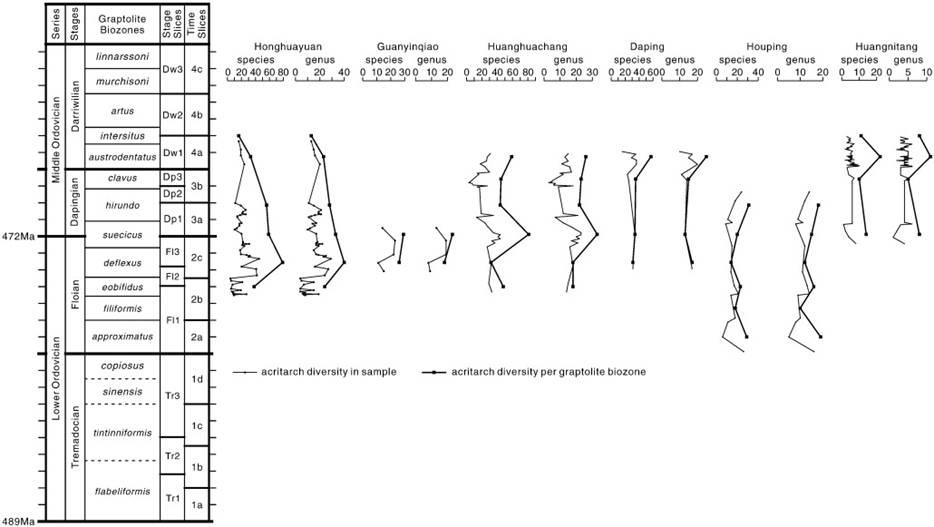The Great Ordovician Biodiversification Event (GOBE) is one of the most significant radiations of marine organisms during Earth history, showing a rapid increase in biodiversity. The diversity patterns of different fossil groups are wildly discussed. In the Proterozoic and Palaeozoic fossil record, most acritarchs are considered to represent marine phytoplankton cysts which evolutions are proposed several opinions on the triggering and controlling factors. A recent review on microphytoplankton of this radiation event in South China is conducted by Dr. YAN Kui et al from Nanjing Institute of Geology and Palaeontology, Chinese Academy of Sciences and France. The diversity patters of microphytoplankton from six sections and literatures in South China have been analysed and the roles of microphytoplankton in the Ordovician ecosystem have been discussed. This paper is published on recent issue of Palaeogeography, Palaeoclimatology, Palaeoecology.
Yan et al. found a major radiation of the phytoplankton occurred during the late Early Ordovician-early Middle Ordovician. The diversity changes vary in the different parts of the investigated area, most probably depending on the position of the analysed sections on the carbonate shelf or the slope, reflecting diversity differences due to the position on an inshore-offshore transect. The Early-Middle Ordovician diversity pattern of the phytoplankton is compared with those of several marine invertebrate groups. The different fossil groups, such as chitinozoans, conodonts, graptolites, brachiopods and trilobites show therefore different evolutionary patterns to that of the acritarchs, that are not yet fully understood, and correlations are so far difficult. The acritarch diversity changes can partly be compared to the local sea-level changes from four sections in South China. At a larger scale, the acritarch radiation coincides with a general transgression. At a regional or local scale, correlations are not straightforward, pointing out that more detailed data, based on both acritarch studies and more precise sea-level investigations, are necessary.
Paper reference: YAN Kui*, SERVAIS, T., LI Jun, WU Rongchang & TANG Peng. 2011. Biodiversity patterns of Early–Middle Ordovician marine microphytoplankton in South China. Palaeogeography, Palaeoclimatology, Palaeoecology, 299: 318-334.

